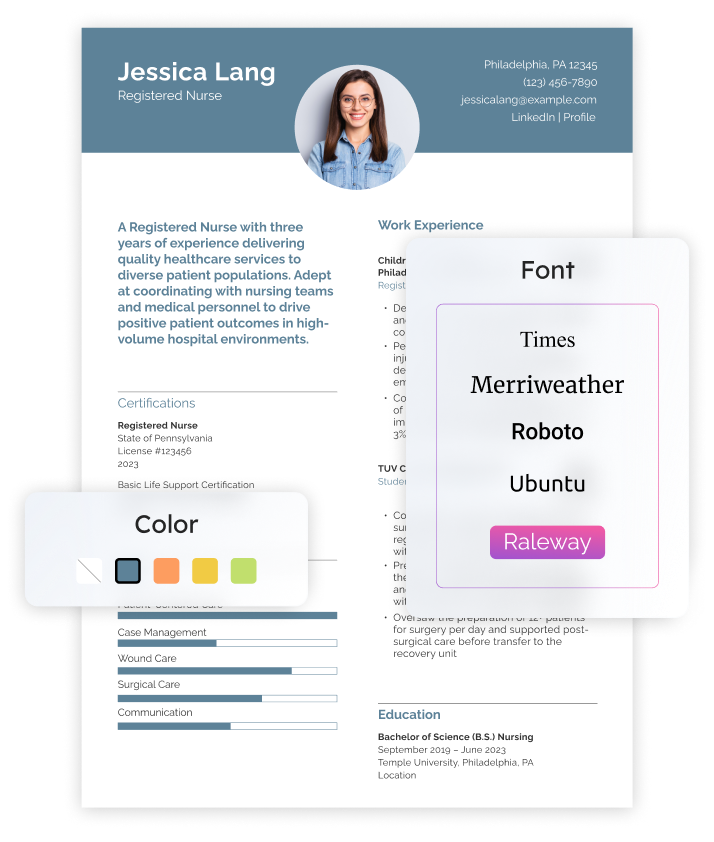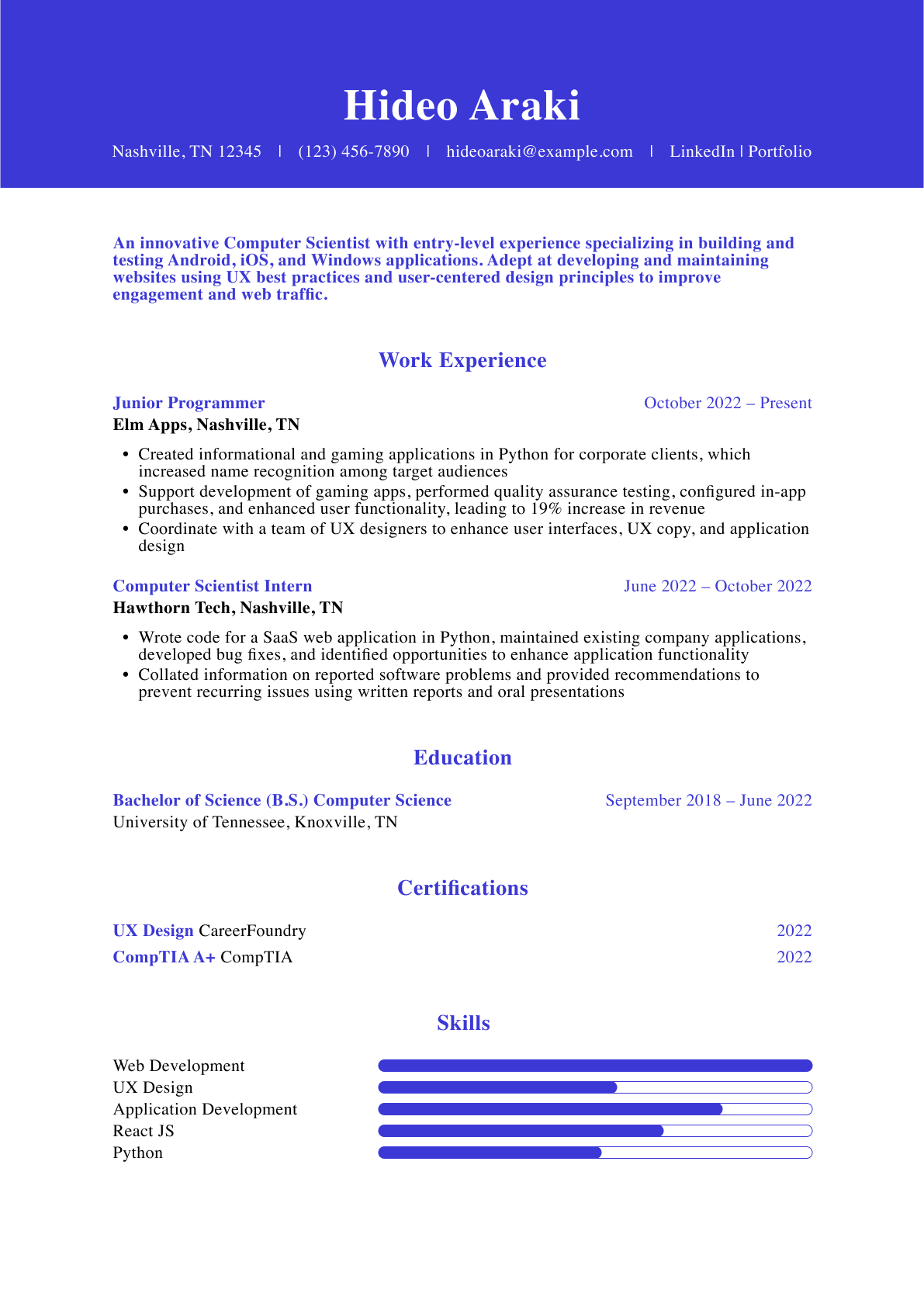Your resume should show the hiring manager your qualifications and skills and why you’re a good fit for the job, but how do you determine which strengths to put on a resume? Choosing qualities and skills that match the job requirements can help your application stand out. This guide explains how to identify relevant strengths for a resume and provides examples of how to work them into your document for a stronger candidate profile.
For expert guidance on overall resume structure, check out our how to make a resume guide.
Why Listing Strengths on a Resume Matters
Listing your strengths on your resume demonstrates your suitability for the position and makes it easier for the hiring manager to differentiate you from other candidates. The resume strengths you include should complement your overall experience and accomplishments to present a cohesive, well-rounded picture of who you are as an employee. A well-crafted strengths section should showcase both your technical skills and soft skills.
Where To Include Strengths on a Resume
Hiring managers and recruiters only spend a few seconds on the initial review of your resume, so where you include your strengths matters. Align your strengths with the specific job description by integrating key phrases throughout the resume, especially in these three sections:
- Summary or objective. Include your most impressive or relevant strengths here. It’s the first section the hiring manager reads, and it’s important to make a strong first impression.
- Skills section. Use strengths to add more context to your skills list. Professional strengths, such as conflict resolution and communication, are sought-after soft skills employers often seek when expanding their business.
- Work experience. Add your strengths in the bullet points discussing your job responsibilities and achievements. For example, if you’re highlighting an increase in operational efficiency, this could relate to strengths in data analytics and applications.
For ideas on organizing your content, review our resume outline examples to ensure your strengths are placed where they’ll have the greatest impact.
Types of Strengths To Put On a Resume
Soft skills
Also known as professional skills, soft skills are highly relevant to workplace collaboration, teamwork, and company culture. When choosing these strengths for a resume, research the company to learn more about its values or mission statement. This can help you decide which strengths to prioritize. Common examples of soft skills include:
- Adaptability
- Creative thinking
- Critical thinking
- Cultural competence
- Effective communication
- Emotional intelligence
- Leadership
- Negotiation
- Resilience
- Time management
Technical skills
Most industries today require employees to be proficient in computers or other technological tools that make their jobs easier or more efficient. Listing your technical strengths on your resume shows hiring managers that you know what’s required for the position and already have experience integrating technology into the role. Examples of common technical skills include:
- Artificial intelligence (AI)
- Blockchain
- Customer relationship management (CRM) tools
- Data analysis
- Database management
- Financial modeling
- Programming languages, such as Python or C++
- Web development
Examples of Strengths To Put On a Resume
Resume strengths for entry-level candidates
- Efficiency improvement
- Fact-checking and proofreading
- Independent research
- Microsoft Office Suite (Word, Outlook, PowerPoint)
- Office administration
- Process streamlining
- Team collaboration
- Writing and editing
Resume strengths for mid-level professionals
- Business needs assessment
- Efficiency improvement
- Hiring and retention
- Project management
- Quality assurance
- Staff training and development
- Team leadership and motivation
- Time management
Resume strengths for executives
- Business development
- Business strategy
- Change management
- C-suite relations
- Operations management
- Public relations
- Stakeholder management
- Strategic planning
How To Identify Your Strengths for a Resume
If you’re unsure what strengths to put on your resume, conducting a self-assessment can help. Start by reviewing past performance reviews or feedback from supervisors or colleagues. Take note of the things you consistently do well and areas you’ve improved in over the years.
It can also help to reflect on particularly successful projects you’ve led or been a part of to see what about your particular personality qualities and skill set made it a positive experience. If you’re still stuck, consider using one of the many online personality assessments or skills inventories.
Tailoring strengths to the job description
Once you’ve identified your core strengths, compare your list and the job description to see if there are any direct areas of overlap. Look beyond the actual phrasing. For example, a skills assessment might identify mentoring as one of your strengths for a resume, while the job description may use the term “leadership.”
Use industry-specific language when possible to integrate potential keywords and to catch the hiring manager’s attention. But be careful about overloading with jargon. Your resume should still be easy to read and clearly highlight your areas of expertise.
Common Mistakes When Listing Strengths on a Resume
When deciding which strengths to put on a resume, avoid these common errors:
- Overloading the resume. Most people have multiple strengths, but you don’t need to list every single one on your resume. Focus on what’s most relevant to the role or what differentiates you from other candidates.
- Listing strengths not aligned with the job role. Every resume you send should be tailored to that specific company and position. Review your document to ensure irrelevant information isn’t taking up valuable space that could highlight stronger accomplishments.
- Noting strengths without evidence to back them up. Anyone can say they are great at something, but including data-focused results that back up those claims resonates with hiring managers.
FAQs About Listing Strengths on a Resume
How many strengths should I include on my resume?-
There’s no magic number of strengths to include on your resume, but your skills and qualifications should be apparent throughout the document. As you write your resume, include the most important strengths in the profile and experience sections. If there’s anything else you want to highlight, the skills list is a good place to do so.
Should I focus more on technical or soft strengths?-
Resume strengths should include both technical competencies and soft skills. Having a mixture of both shows that you have the experience and expertise for the position and the ability to work well as part of the team.
What if I have limited experience?-
Those with limited work experience often benefit from focusing on transferable skills from other areas of their lives. The same is true for strengths for a resume. For example, if you excel at keeping things on schedule and motivating others, that may point to a natural talent for project management. People who like talking to others and helping them solve problems may have strengths that relate to customer service skills.
How do I effectively balance technical skills and soft skills on my resume?-
Balancing technical skills and soft skills on your resume is essential for attracting hiring managers. Start by analyzing the job description to determine which technical skills and soft skills are most relevant for the position. For instance, if the role requires proficiency in data analysis and effective communication, ensure both are prominently featured. Incorporate technical skills through a dedicated skills section and support them with concrete examples in your work experience. Simultaneously, weave in soft skills such as teamwork, adaptability, and problem-solving to present a well-rounded candidate profile.
How can I showcase my critical thinking skills in alignment with the job description?-
Showcasing critical thinking skills involves highlighting examples where you solved complex problems or made strategic decisions. Tailor your resume to reflect instances where these skills were key to achieving measurable results. Hiring managers value candidates who can analyze challenges and develop innovative solutions. Provide specific examples in your work experience, and consider adding a bullet point in your summary that mentions your proven critical thinking skills.
Craft your perfect resume in minutes
Get 2x more interviews with Resume Builder. Access Pro Plan features for a limited time!




